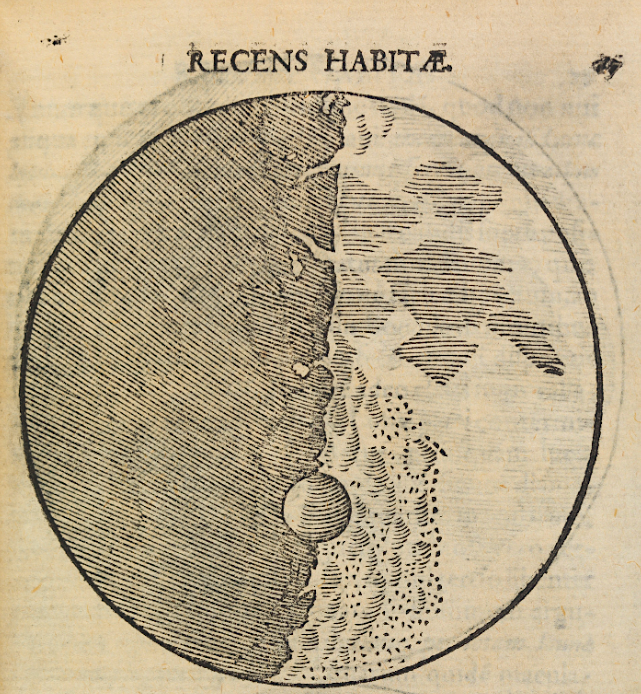Overview
Definition of the Scientific Revolution
The Scientific Revolution refers to the period of profound intellectual and cultural transformation that took place in Europe during the sixteenth and seventeenth centuries. It was a time when traditional beliefs and religious authority were challenged by the emergence of empirical observation, experimental methods, and rational inquiry. This revolution marked a shift from medieval scholasticism to a more scientific and evidence-based approach to understanding the natural world. The Scientific Revolution was characterized by a break from traditional Aristotelian and Ptolemaic views and the adoption of new scientific theories that laid the foundation for modern science. Scientists during this period sought to explain natural phenomena through systematic observation, mathematical analysis, and logical reasoning. The Scientific Revolution paved the way for groundbreaking discoveries and advancements in various fields, including astronomy, physics, biology, and medicine.
Historical context
The historical context of the Scientific Revolution was a period of great change and discovery in Europe. It emerged in the 16th century as a response to the limitations of the medieval worldview and the dominance of religious authority in explaining natural phenomena. This period was marked by a shift towards empirical and evidence-based approaches to understanding the natural world. Scholars and scientists began to question traditional beliefs and seek out new knowledge through observation, experimentation, and the scientific method. The Renaissance, with its emphasis on humanism and the revival of classical learning, also played a significant role in setting the stage for the Scientific Revolution. During this time, there was a renewed interest in ancient Greek and Roman texts, which sparked intellectual curiosity and a desire to explore the unknown. The exploration of new lands and encounters with different cultures further fueled the spirit of inquiry and discovery. As a result, the Scientific Revolution became a turning point in human history, laying the foundation for modern science and the Enlightenment.
Key figures and their contributions
The Scientific Revolution was a period of immense intellectual and scientific advancements that took place from the 16th to the 18th centuries. It was characterized by a shift from traditional beliefs and reliance on authority to a focus on empirical evidence and reason. During this time, several key figures emerged and made groundbreaking contributions to various fields of study. These pioneers of the Scientific Revolution laid the foundation for modern enlightenment and shaped the way we understand the world today.
The Copernican Revolution

Introduction to heliocentrism
The Copernican Revolution marked a significant shift in our understanding of the universe and the place of Earth within it. Prior to Copernicus, the prevailing belief was that Earth was the center of the universe, with all celestial bodies revolving around it. However, Copernicus proposed a heliocentric model, in which the Sun was at the center and the planets, including Earth, orbited around it. This revolutionary idea challenged traditional religious and philosophical beliefs, as well as the established scientific understanding of the time. Copernicus’s heliocentric model laid the foundation for a new era of astronomical exploration and discovery, spearheading a revolution in our understanding of the cosmos.
Nicolaus Copernicus and his heliocentric model
Nicolaus Copernicus is widely known for his revolutionary heliocentric model of the universe, which challenged the prevailing geocentric model. In his book De Revolutionibus Orbium Coelestium, Copernicus proposed that the Sun, not the Earth, was the center of the solar system, and that the planets, including Earth, revolved around it in circular orbits. This bold idea was groundbreaking at the time and sparked a scientific revolution. Copernicus’s heliocentric model had significant implications for astronomy and cosmology, as it provided a more accurate explanation of the observed motions of celestial bodies. It also paved the way for future advancements in our understanding of the universe. By challenging the established beliefs of his time, Copernicus laid the foundation for a new era of scientific inquiry and discovery.
Impact on astronomy and cosmology
The Copernican Revolution had a profound impact on the fields of astronomy and cosmology. Prior to Copernicus, the prevailing belief was that the Earth was the center of the universe, with the Sun, Moon, and other celestial bodies revolving around it. However, Copernicus challenged this geocentric model and proposed a heliocentric model, with the Sun at the center and the planets, including Earth, orbiting around it. This revolutionary idea not only shifted our understanding of the solar system but also paved the way for further scientific advancements in astronomy and cosmology. Copernicus’s heliocentric model provided a more accurate explanation for the observed motions of the planets and helped resolve certain astronomical anomalies. It also laid the foundation for future astronomers and scientists to build upon his work and refine our understanding of the universe. The revolutionary nature of Copernicus’s ideas sparked a paradigm shift in astronomy and cosmology, challenging long-held beliefs and pushing the boundaries of scientific knowledge.
The Newtonian Revolution

Isaac Newton and his laws of motion
Isaac Newton is widely regarded as one of the most influential scientists in history. His laws of motion, which were published in his groundbreaking work Philosophiæ Naturalis Principia Mathematica, revolutionized the understanding of physics. Newton’s three laws of motion, known as Newton’s laws, laid the foundation for classical mechanics and provided a mathematical framework for describing the motion of objects. These laws, along with his law of universal gravitation, explained the motion of celestial bodies and led to a new understanding of the universe. Newton’s laws of motion are still taught in physics classrooms today and continue to be used to solve real-world problems in various fields of science and engineering.
Universal gravitation and the Principia
Isaac Newton’s groundbreaking work on universal gravitation and his publication of the Principia in 1687 revolutionized the understanding of physics. In the Principia, Newton presented his three laws of motion and the mathematical principles of gravity. He proposed that every particle of matter in the universe attracts every other particle with a force that is directly proportional to the product of their masses and inversely proportional to the square of the distance between them. This law of universal gravitation provided a unified explanation for the motion of celestial bodies and objects on Earth. Newton’s work laid the foundation for modern physics and became the cornerstone of classical mechanics. It not only explained the movements of the planets but also enabled predictions of their future positions. The Principia’s impact extended beyond the scientific community and influenced various fields, including engineering, navigation, and astronomy. Newton’s revolutionary ideas set the stage for further scientific advancements and played a crucial role in shaping the Scientific Revolution and the Enlightenment.
Revolutionizing the understanding of physics
The Newtonian Revolution, led by Isaac Newton and his laws of motion, completely transformed the way we perceive and comprehend the physical world. Newton’s laws, which describe the relationship between an object’s motion and the forces acting upon it, provided a unified framework for understanding the behavior of objects on Earth and in space. This revolution in physics was further solidified by Newton’s concept of universal gravitation, as outlined in his seminal work, Principia Mathematica. The concept of gravity as a force that acts between all objects in the universe, governed by mathematical equations, revolutionized our understanding of celestial mechanics. Newton’s revolutionary ideas not only laid the foundation for classical mechanics but also paved the way for future discoveries and advancements in the field of physics.
The Enlightenment and the Scientific Revolution

The influence of the Scientific Revolution on the Enlightenment
The Scientific Revolution had a profound impact on the Enlightenment, shaping the way people thought about the world and their place in it. During the Scientific Revolution, empirical evidence and rational thinking became central to understanding the natural world, challenging traditional beliefs and superstitions. This shift in thinking laid the foundation for the Enlightenment, a period of intellectual and philosophical growth. Enlightenment thinkers, such as Voltaire, John Locke, and Immanuel Kant, were inspired by the scientific method and sought to apply its principles to other areas of knowledge, including politics, ethics, and social structures. They emphasized the importance of reason, logic, and individual rights, advocating for a society based on freedom, equality, and tolerance. The Scientific Revolution not only expanded our understanding of the natural world but also sparked a revolution in human thought and paved the way for the modern era.
Enlightenment thinkers and their scientific approach
Enlightenment thinkers embraced a scientific approach to understanding the world, seeking to apply reason and empirical evidence to all aspects of life. They believed that through observation, experimentation, and logical analysis, they could uncover the laws governing nature and society. Francis Bacon, an English philosopher, emphasized the importance of observation and experimentation in his work Novum Organum. He argued that knowledge should be based on evidence and that scientific inquiry should be guided by the principles of induction and deduction. René Descartes, a French philosopher and mathematician, developed a method of systematic doubt, known as Cartesian skepticism, which aimed to establish a foundation of knowledge through rational inquiry. His famous phrase, Cogito, ergo sum (I think, therefore I am), exemplified his commitment to rational thinking. Isaac Newton, an English physicist and mathematician, is widely regarded as one of the most influential Enlightenment thinkers. His laws of motion and theory of universal gravitation revolutionized the understanding of physics, providing a mathematical framework to explain the motion of celestial bodies and objects on Earth. These Enlightenment thinkers paved the way for a new era of intellectual exploration and scientific progress, leaving a lasting legacy on the development of modern science and the Enlightenment movement as a whole.
The legacy of the Scientific Revolution
The Scientific Revolution had a profound and lasting impact on the world, shaping the course of human history and paving the way for the modern age of enlightenment. It revolutionized the way we understand the natural world, challenging long-held beliefs and introducing a new scientific approach based on observation, experimentation, and empirical evidence. The legacy of the Scientific Revolution can be seen in various aspects of society, including technology, medicine, philosophy, and education. In the field of technology, the Scientific Revolution laid the foundation for the development of innovative inventions and advancements that have transformed the way we live and work. From the invention of the steam engine to the development of electricity, the Scientific Revolution sparked a wave of technological progress that continues to this day. In the field of medicine, the Scientific Revolution led to significant advancements in our understanding of the human body and the development of new treatments and therapies. The use of scientific methods and evidence-based practices revolutionized the field of medicine, leading to improved healthcare outcomes and a better quality of life for individuals. In the realm of philosophy, the Scientific Revolution challenged traditional religious and philosophical beliefs, emphasizing the importance of reason, logic, and empirical evidence in the pursuit of knowledge. The scientific method became a cornerstone of philosophical inquiry, influencing the works of prominent philosophers such as René Descartes and Francis Bacon. Finally, the Scientific Revolution had a profound impact on education, transforming the way knowledge is acquired and disseminated. The establishment of scientific societies and institutions, such as the Royal Society in England, provided a platform for scientific collaboration and the exchange of ideas. The Scientific Revolution also gave rise to the development of scientific textbooks and educational materials, making knowledge more accessible to a wider audience. In conclusion, the legacy of the Scientific Revolution is far-reaching and continues to shape our world today. It has paved the way for advancements in technology, medicine, philosophy, and education, and has fostered a spirit of inquiry and curiosity that is essential for scientific progress.
Avid Writer with invaluable knowledge of Humanity!
Upcoming historian with over 30 million views online.
“You make your own life.”





